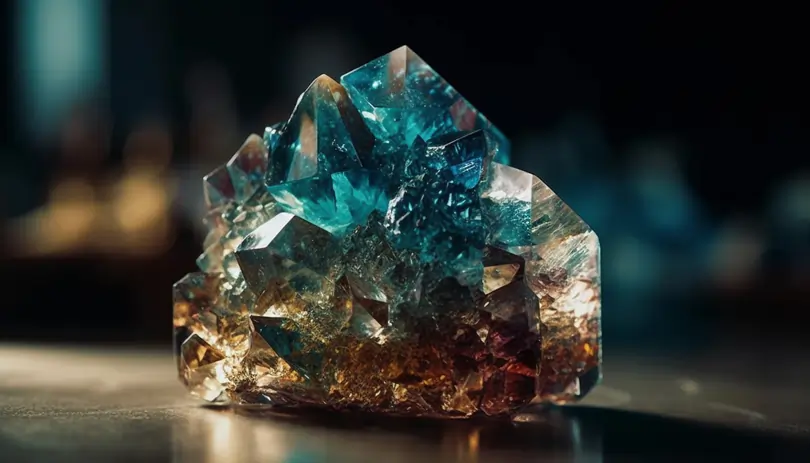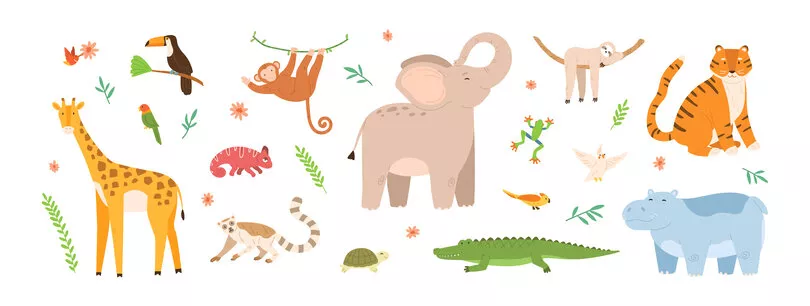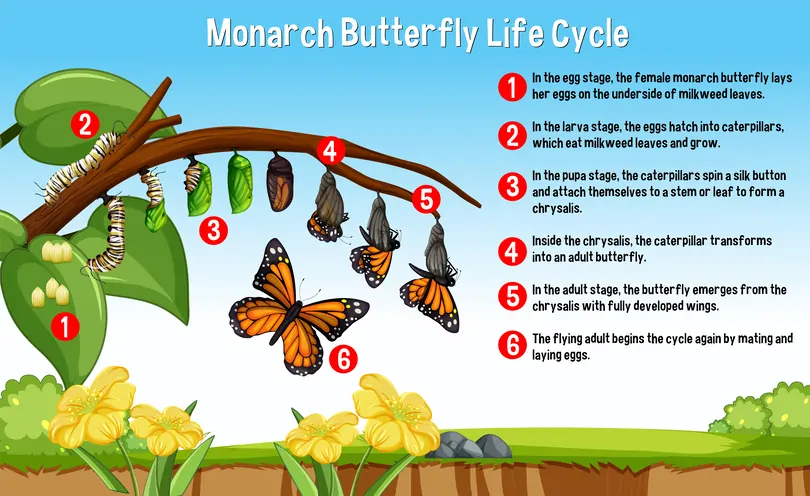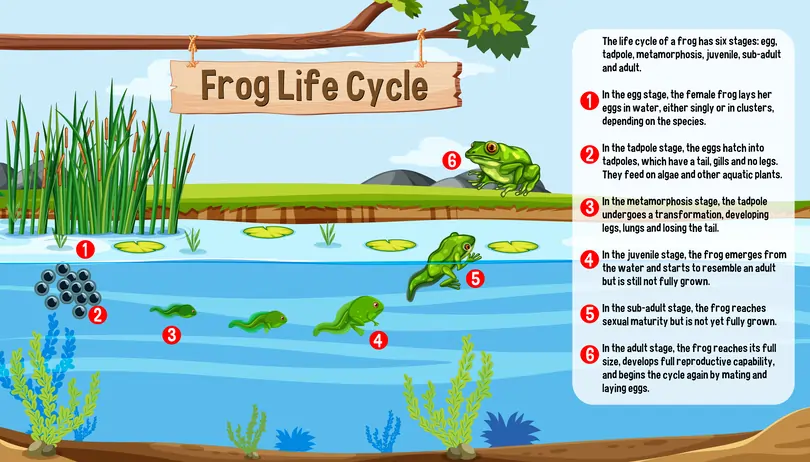Butterfly Life Cycle (4 Stages Explained)

Photo by Butterfly Identification
Isn't it fascinating that every beautiful butterfly with its coloured wings was once a tiny little egg?
In this blog, we'll be taking a look at the four stages of the butterfly life cycle: egg, caterpillar, chrysalis, and adult butterfly.
We'll also be exploring the notable butterfly species that flutter about our home—the world's garden city, Singapore.
What is a butterfly?
First, let’s talk about what exactly a butterfly is.
Simply put, a butterfly is an insect belonging to the order Lepidoptera, which also includes moths. They are known for their strikingly colourful wings, which are covered in tiny scales that create beautiful patterns.
Butterflies primarily feed on nectar from flowers, using their long proboscis to sip the sweet goodness. As they flit from flower to flower, they play a vital role in pollination, helping plants thrive and reproduce. Found in many different habitats around the world, butterflies are not just pretty to look at—they're essential to our ecosystems too.
Four stages of the butterfly life cycle
Stage #1 Egg
The life cycle begins when a female butterfly lays her eggs, usually on the leaves of specific plants that will provide food for the caterpillars once they hatch. These eggs are often tiny, round, or oval-shaped, and can vary in color and texture depending on the species.
The egg stage typically lasts from 3 to 10 days.
Fun Fact: Some butterfly species lay hundreds of eggs at once to increase the chances of survival for their young!
Stage #2 Larva (Caterpillar)
Once the eggs hatch, out come the hungry caterpillars! This stage is all about eating and growing. Caterpillars are often brightly coloured, which can serve as a warning to predators about their potential toxicity. They munch on leaves and other plant parts, shedding their skin multiple times as they grow. This process is known as molting.
Caterpillars can spend 3 to 6 weeks in this stage, gaining the energy they need for the next phase of their life.
Fun Fact: Caterpillars can grow up to 100 times their original size during this stage!
Stage #3 Pupa (Chrysalis)
After the caterpillar has reached its full size, it will find a safe spot to transform into a pupa, also called a chrysalis. Inside this protective casing, an incredible transformation occurs. The caterpillar’s body breaks down and reorganizes, forming the structures of a butterfly.
This stage can last from one to several months, depending on the species and environmental factors.
Fun Fact: Some species can enter a state of dormancy during the chrysalis stage, allowing them to survive harsh conditions!
Stage #4 Adult Butterfly
Finally, the chrysalis opens, revealing a beautiful adult butterfly! At first, its wings are crumpled and wet, but soon they expand and dry. Once ready, the butterfly takes its first flight, exploring its surroundings and searching for food.
Adult butterflies can live from a few weeks to several months, depending on the species.
Fun Fact: Some butterflies, like the Monarch, can migrate thousands of miles during their lifetime.
What are some notable butterfly species in Singapore?

Photo via The Straits Times
Common Rose (Pachliopta aristolochiae): This butterfly has been voted Singapore's national butterfly, recognised for its striking black wings adorned with red spots and a distinctive white patch on the hindwings. The body is bright red, and the wingspan ranges from 85 to 100 mm.
Where to spot it: Singapore Botanic Gardens, Singapore Zoo, and Hort Park, where its host plants (Aristolochia spp.) are cultivated.
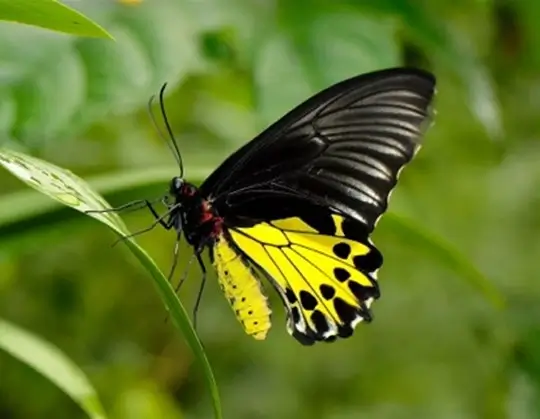
Photo by Tea Yi Kai
Common Birdwing (Troides helena): The largest butterfly in Singapore, it is known for its impressive wingspan and vibrant yellow and black colouration. Males often have more vivid colours than females.
Where to spot it: This species is commonly found in forested areas and nature reserves like Bukit Timah Nature Reserve and the Central Catchment Nature Reserve.
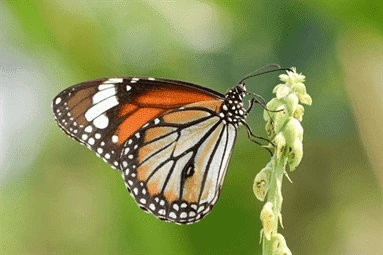
Photo by Boyi Zhou
Common Tiger (Danaus genutia): A member of the Danaidae family, this butterfly is easily recognisable by its distinctive tiger-like stripes and is commonly seen in gardens and parks.
Where to spot it: Gardens, parks, and open spaces across Singapore, including East Coast Park and Sentosa.
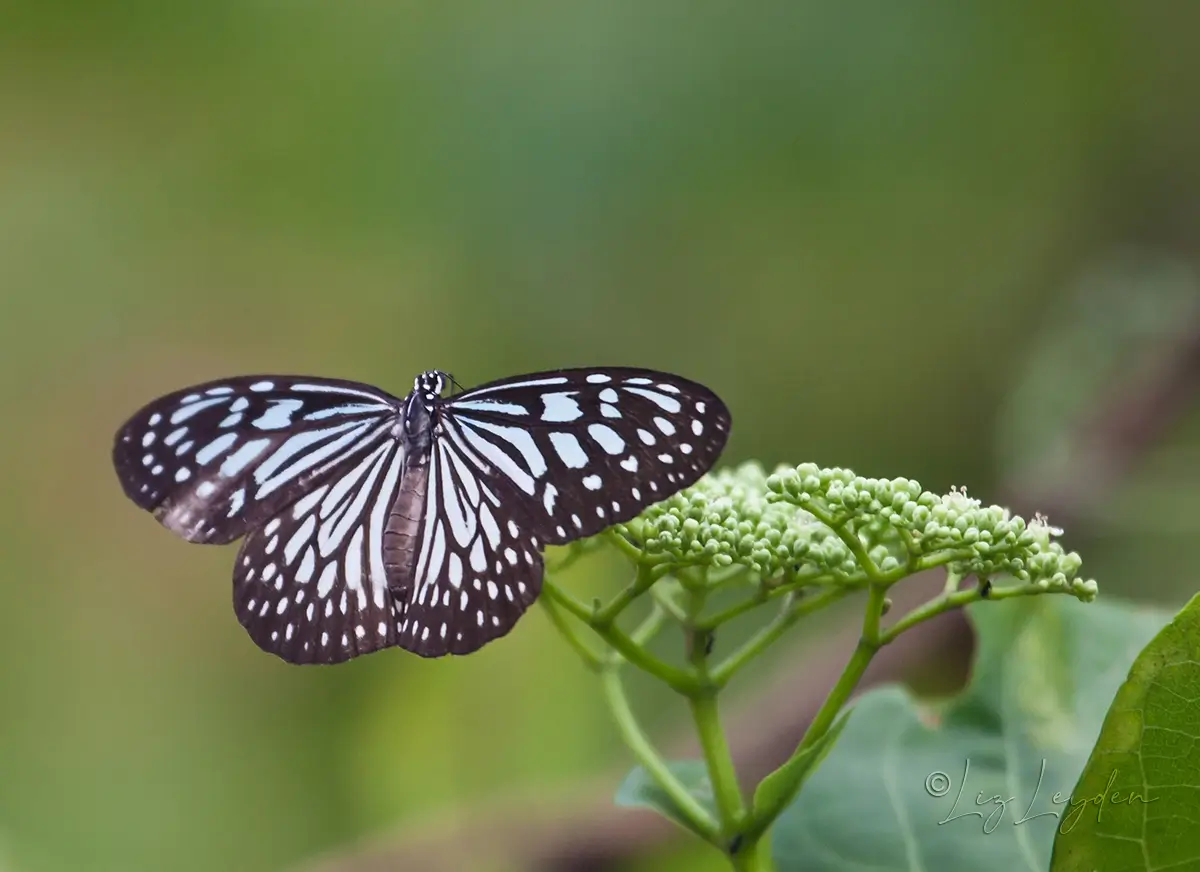
Photo by Liz’s World
Blue Glassy Tiger (Ideopsis vulgaris): This species belongs to the Danaid group and is known for its beautiful blue and black colouration.
Where to spot it: Forest edges and urban gardens throughout Singapore.
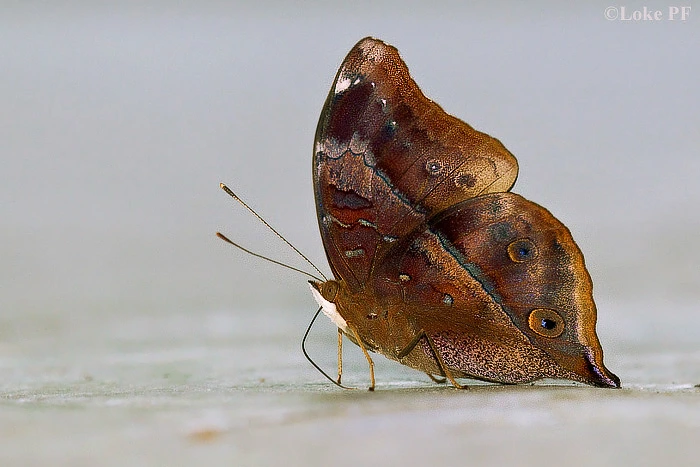
Photo by Butterflies of Singapore
Autumn Leaf (Doleschallia bisaltide): Named for its leaf-like appearance when resting, this butterfly can be found in various habitats across Singapore. Its brown wings mimic dead leaves, aiding in camouflage.
Where to spot it: Wooded areas and parks like MacRitchie Reservoir Park, where it can blend into its surroundings among foliage.
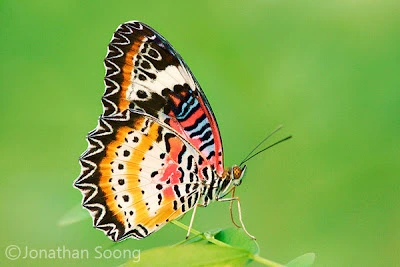
Photo by Jonathon Soong
Leopard Lacewing (Cethosia cyane): Known for its colourful patterns of orange, black, and white. It has a wingspan of about 50 to 60mm.
Where to spot it: Gardens and forested areas throughout Singapore, particularly near flowering plants where it feeds on nectar.
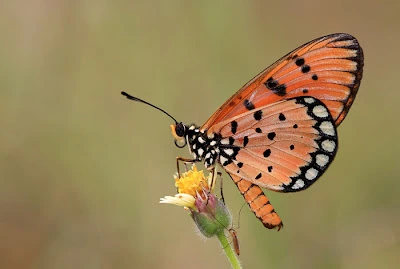
Photo by Butterflies of Singapore
Tawny Coster (Acraea terpsicore): A common sight in urban areas, this butterfly is recognised by its tawny orange wings with black spots.
Where to spot it: Urban environments, gardens, and roadside vegetation across Singapore.
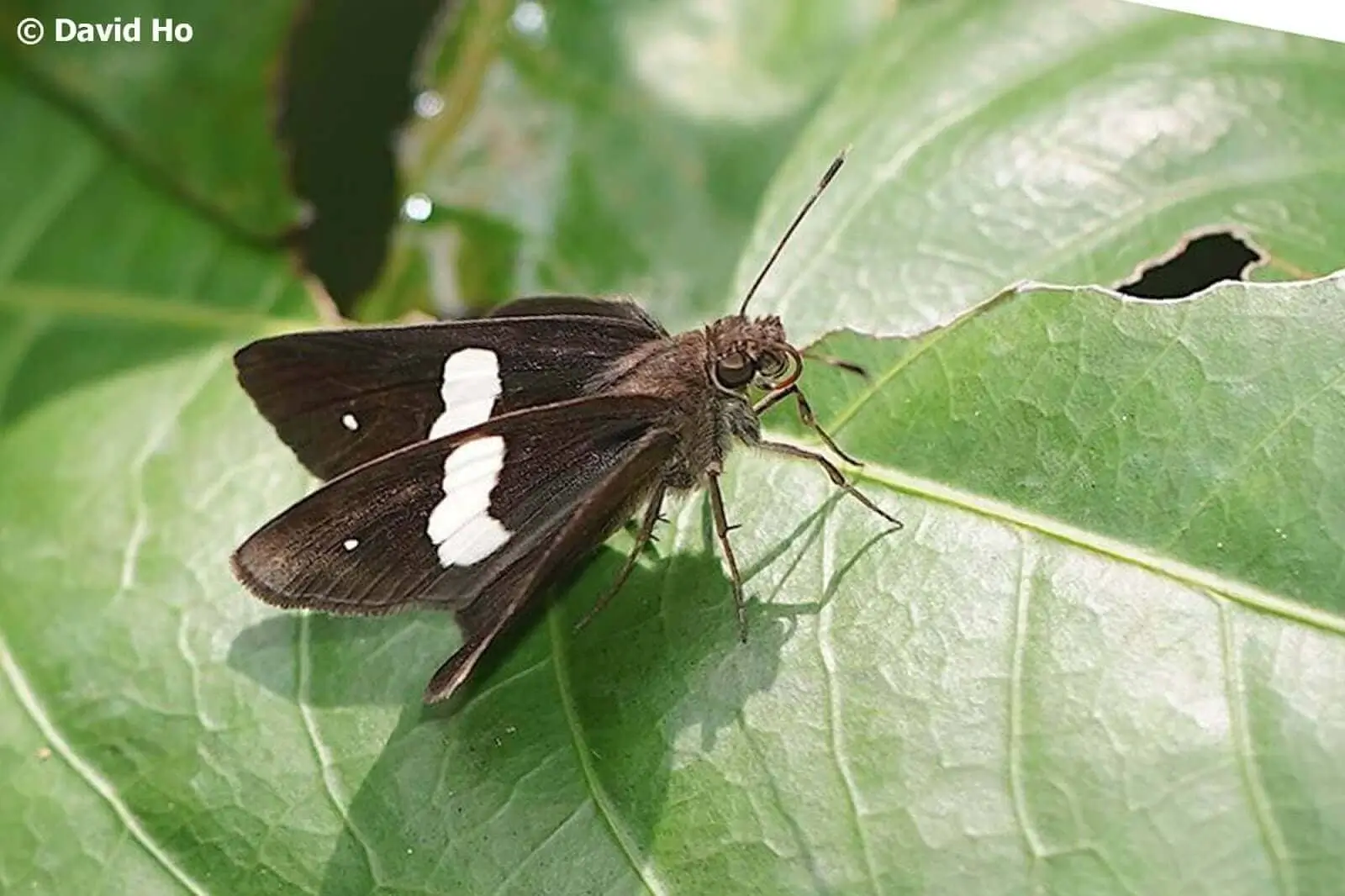
Photo by David Ho
Banded Demon (Notocrypta paralysos): This butterfly spots dark brown wings with distinct light bands.
Where to spot it: Shaded areas within forests. Can be found in Bukit Timah Nature Reserve.
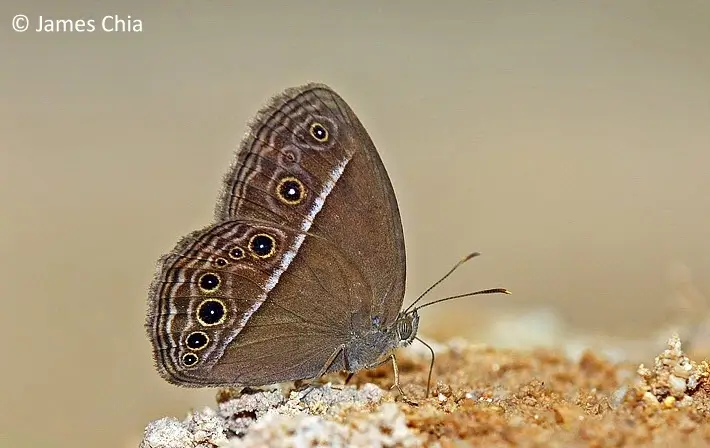
Photo by James Chia
Bush Browns (Mycalesis spp.): Medium-sized butterflies that typically spot brown wings and eye spots. They are often found resting on the ground or foliage.
Where to spot it: Shaded forest areas and grasslands throughout Singapore.
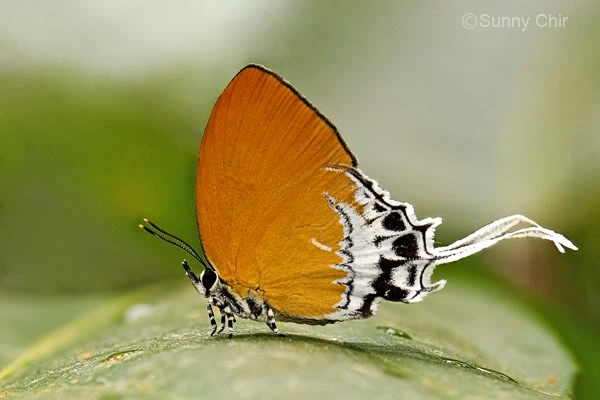
Photo by Sunny Chir
Branded Imperial (Eooxylides tharis): This butterfly is part of the Lycaenidae family and is noted for its unique branding patterns on the wings. It boasts iridescent blue patches on its wings, making it instantly recognisable!
Where to spot it: Forested areas as well as urban parks where it feeds on nectar from various flowers.
Frequently Asked Questions (FAQs)
What are the four stages of a butterfly's life cycle?
A butterfly's life cycle consists of four stages: egg, larva (caterpillar), pupa (chrysalis), and adult butterfly. Each stage plays a crucial role in the butterfly's development, leading to its transformation through metamorphosis.
How long does it take for a butterfly to go through its life cycle?
The duration of a butterfly's life cycle can vary depending on species and environmental conditions. On average, it takes about 30 days to complete all four stages, but some species may take several months.
What are the differences between a moth and a butterfly?
The main differences are in their antennae and wing resting positions. Butterflies typically have thin, clubbed antennae, while moths have feathery or comb-like antennae. When resting, butterflies usually hold their wings upright, whereas moths rest with their wings spread flat or tent-like over their bodies.
What happens inside a chrysalis?
Inside the chrysalis, the caterpillar undergoes a dramatic transformation called metamorphosis. Its body breaks down, and adult butterfly structures form, such as wings, legs, and antennae, preparing it to emerge as a fully developed butterfly.
How do butterflies help the environment?
Butterflies play a key role in pollination, transferring pollen between flowers, which helps plants reproduce. Additionally, they serve as an important food source for other animals, contributing to the broader ecosystem's health.


 SG
SG  VN
VN 

